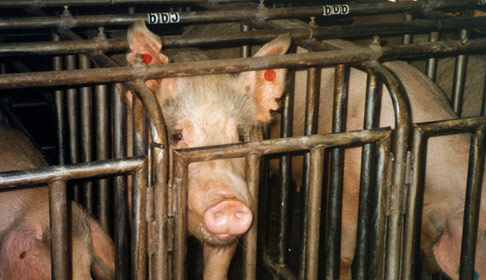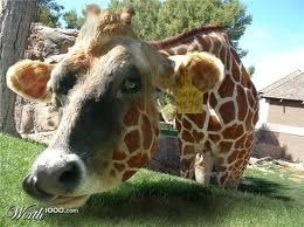The Psychology of Blaming Others During the Time of COVID-19
Humans are emotionally invested in ensuring that, whatever happens, the spotlight of blame never shines directly on us. So we blame wet markets in Asia for the spread of COVID-19 instead of ourselves.
This article was originally posted on Sentient Media.
The Pakistani author and artist Raheel Farooq says that “ugly truths are the biggest source of indigestion in humans.” During this pandemic, his words remind us that the ugliest truth of all lies within ourselves.
The current consensus about the origin of COVID-19, sans conspiracy theories, is that it originated in a wild species of mammal, such as a pangolin or bat, typically found in wet markets—places where a wide range of wild and domestic animals are confined in small, stressful, and unsanitary conditions. Animals at wet markets are sold to customers who either have them slaughtered on the spot or take them home to eat, sometimes alive. The wet market where COVID-19 first spread to humans was located in Wuhan, China. None of these facts are disputed by reputable epidemiologists or disease experts. Because the epicenter of this pandemic is located in another nation—a “foreign” nation—some humans in Western countries have been desperately trying to find a way to blame someone else—anyone else—for our predicament.
The Chinese wet markets are indeed places where viruses like COVID-19 are hatched. They are places of heinous cruelty towards other animals and deserve to be banned. But pandemics also originate on factory farms, both in the U.S. and other Western countries. A multitude of authors, including Stubler and Sebo, have recently reminded us of this fact. Yet, while residents of Western countries are busily pointing fingers at the wet markets of Asia, we are unable to look in the mirror at ourselves. The public mistakenly views factory farms in the U.S. as places where animals are concentrated, but in sanitary conditions and not treated like the animals in Chinese wet markets. Pigs, chickens, sheep, and cows are all killed away from the public eye, given antibiotics, and looked after by certified veterinarians. The USDA assures customers that it monitors the safety of the meat from these animals; consumers in supermarkets buying pork chops or chicken thighs have little information that suggests otherwise. But most of all, humans in the U.S. are psychologically unable to come to terms with the fact that our eating other animals from factory farms is on the same continuum as shopping at wet markets in China. Both practices are equally dangerous and cruel.
People in the U.S. are psychologically unable to come to terms with the fact that our eating other animals from factory farms is on the same continuum as shopping at wet markets in China.Humans are emotionally invested in ensuring that, whatever happens, the spotlight of blame never shines directly on us; we are loath to give up the pleasures of eating meat. As I point out in my recent essay in Aeon magazine, humans “are masters at erecting psychological defenses and justifying behavior that we know is not ethical but feels good, such as pleasuring the palate.” Bluntly, our species is very good at ignoring the suffering of animals in slaughterhouses and the health risks of eating animal products, all for a juicy T-bone. As long as humans continue to “bat away” the spotlight of interrogation in regards to eating animals, and keep pushing that spotlight onto other countries and other people, we can continue to erroneously believe that we can have our steak and eat it, too.
Many psychological defense mechanisms come into play when humans try to mount excuses for actions that we want to continue despite ample evidence that we should stop. Some well-known defenses particularly relevant to the COVID-19 situation and meat-eating include Denial, Displacement, Rationalization, Compartmentalization, and Projection.
Denial is the refusal to accept fact or reality. It is a primitive defense mechanism and the most common psychological defense. “I don’t believe that COVID-19 exists” is Denial in action.
Displacement is the redirecting of thoughts, feelings, and impulses onto another person or object, usually an “easy” target. “If it weren’t for the Chinese / Bill Gates / Republicans / Democrats / Trump / drug companies, we wouldn’t be in this mess!”
Rationalization is putting something into a different light or conjuring a different explanation for one’s perceptions or behaviors in the face of a changing reality. A common rationalization of meat-eaters is, “Eating a pig or a cow is different than eating a bat or a dog—cows and pigs are meant to be eaten.”
Compartmentalization is separating some parts of one’s awareness from other parts and behaving as if one part has a separate set of values. “I’m an animal lover but I love my spare ribs!” exemplifies Compartmentalization. Finally, Projection is the misattribution of a person’s undesired thoughts, feelings, or impulses onto another person who does not share those same sentiments Projection sounds something like, “Those Chinese are incredibly selfish for causing animals to suffer just for their pleasure.”
Given the strong psychological currents underlying humans’ desires to eat meat, relying heavily upon voluntarism or “moral awakening” to end factory farming and wet markets is not likely to be effective. Humans tend to seek the paths of least resistance, or most pleasure, instead of challenging themselves to do the “right” thing. And we are well-equipped, psychologically, to stand our ground.
To meaningfully change our collective habits, I recommend two simple objects—a carrot and a stick. We can use the stick to end meat-eating through strong legislation and enforcement of consequences for violations. Legal protections for other animals, including the granting of legal personhood and other rights-based approaches, are another branch of the stick. At the same time—here comes the carrot—we can continue to provide more positive incentives that entice consumers and businesses to substitute plant-based foods for meat in stores and restaurants.
I once asked my sister Deb, an omnivore who is leaning toward vegetarianism, what it would take for more of the public to order a plant-based meal instead of a meat dish at restaurants. She said: make plant-based options abundant on the menu, affordable, and most of all, tasty. Can’t argue with that logic. Sounds much more appetizing than chronic indigestion and ugly truths.


